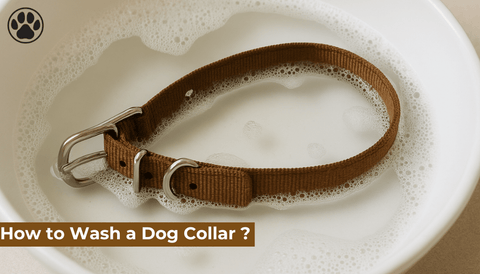
Can You Freeze Fresh Pet Dog Food ?
of reading - words
Keeping your dog’s food fresh and nutritious is a top priority for pet owners. With the rise in popularity of fresh pet dog food, many owners wonder: Can you freeze fresh pet dog food? The short answer is yes! Freezing fresh pet food is a great way to extend its shelf life while maintaining its nutritional value. In this guide, we’ll explore the benefits, best practices, and potential drawbacks of freezing fresh dog food.
The Benefits of Freezing Fresh Pet Dog Food
1. Extends Shelf Life
Fresh dog food typically has a shorter shelf life compared to kibble or canned food. By freezing it, you can preserve the food for weeks or even months without compromising quality. This reduces waste and ensures you always have a nutritious meal ready for your pup.
2. Retains Nutritional Value
Unlike traditional preservatives, freezing locks in essential nutrients, vitamins, and minerals. As long as the food is frozen properly and thawed correctly, your dog will still receive all the health benefits.
3. Prevents Bacterial Growth
Bacteria thrive in moist, warm environments. Freezing fresh pet food helps prevent contamination and spoilage, keeping it safe for your furry friend.
4. Convenient for Busy Pet Owners
Freezing allows you to buy fresh dog food in bulk, which is both cost-effective and time-saving. Instead of worrying about frequent trips to the store, you can simply defrost portions as needed.
How to Freeze Fresh Pet Dog Food Properly
1. Use Airtight, Freezer-Safe Containers
To prevent freezer burn and preserve freshness, store the food in airtight containers, freezer bags, or vacuum-sealed pouches. This also prevents unwanted odors from seeping into other foods.
2. Portion the Food Before Freezing
Instead of freezing an entire bag of dog food, divide it into individual meal portions. This makes it easier to thaw only what you need, reducing waste and maintaining food quality.
3. Label with Dates
Always label your containers with the freezing date to track how long the food has been stored. Fresh dog food is best used within two to six months of freezing.
4. Freeze Quickly
For optimal freshness, place the food in the freezer as soon as possible. Avoid leaving it at room temperature for extended periods before freezing, as this can lead to bacterial growth.
How to Thaw Frozen Fresh Pet Dog Food
1. Refrigerate Overnight
The best way to thaw frozen dog food is by transferring it to the refrigerator at least 12-24 hours before feeding time. This slow thawing process maintains texture and nutritional integrity.
2. Avoid Using the Microwave
While microwaving can speed up thawing, it may unevenly heat the food and destroy beneficial nutrients. If you must use the microwave, opt for the defrost setting and stir the food thoroughly to ensure even temperature distribution.
3. Use Warm Water for Quick Thawing
If you’re short on time, place the frozen food in a sealed bag and submerge it in warm water. This method safely speeds up thawing while preserving nutritional value.
Potential Drawbacks of Freezing Fresh Dog Food
1. Texture Changes
Some fresh foods, particularly those with high moisture content, may experience slight texture changes after freezing. While this doesn’t affect the food’s nutritional value, some dogs may be pickier about the consistency.
2. Freezer Burn
If not stored properly, frozen food can develop freezer burn, which affects taste and texture. To prevent this, always use airtight packaging and avoid exposing the food to air.
3. Thawing Takes Time
Unlike dry kibble, frozen dog food requires planning ahead for thawing. If you forget to thaw in advance, you may need to resort to quick thawing methods, which might slightly compromise quality.
Best Types of Fresh Dog Food to Freeze
Not all fresh dog foods freeze equally well. Here are some types that freeze exceptionally well:
-
Raw diets (raw meats and organ meats freeze well and retain nutrients)
-
Cooked homemade meals (meat, vegetables, and grains maintain quality when frozen properly)
-
Commercial fresh dog food (pre-packaged fresh meals are often designed to withstand freezing)
-
Bone broth and soups (rich in nutrients and easy to thaw for added hydration)
Frequently Asked Questions (FAQ)
1. How long does frozen fresh dog food last?
Properly stored frozen fresh dog food can last between 2 to 6 months. Always check for signs of spoilage before feeding.
2. Can I refreeze thawed fresh dog food?
It’s not recommended to refreeze thawed dog food, as this can lead to bacterial growth and nutritional degradation.
3. How do I know if frozen dog food has gone bad?
Signs of spoiled frozen dog food include foul odors, discoloration, and freezer burn. If the food looks or smells off, discard it immediately.
4. Can I freeze wet canned dog food?
Yes, but it’s best to transfer it to an airtight container before freezing. Canned food can become mushy once thawed, so be mindful of texture changes.
5. Will freezing affect the taste of the food?
While freezing may slightly alter texture, most dogs won’t mind the taste. If your dog is hesitant, try adding a bit of warm water to enhance flavor.
Conclusion
Freezing fresh pet dog food is a safe, convenient, and effective way to preserve your dog’s meals while maintaining nutritional value. By following proper freezing and thawing techniques, you can ensure that your pet continues to enjoy high-quality, healthy food without waste. Whether you prepare homemade meals or buy fresh commercial dog food, freezing is an excellent way to keep your pup’s diet fresh and nutritious.




